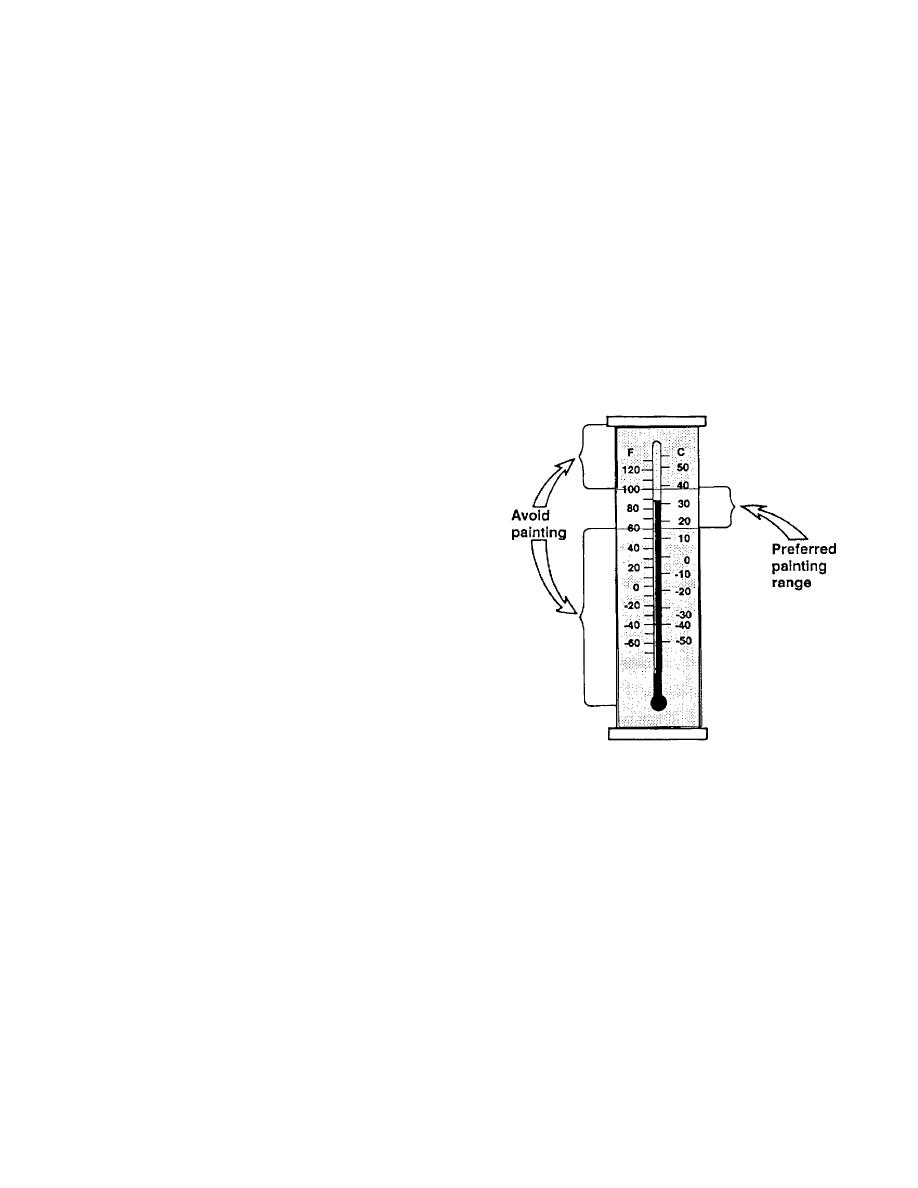
TB 43-0242
3-5. Weather for Painting. The weather conditions
camouflaged surface, try to repaint using the original
when you paint are important. Painting when the
camouflage pattern. The pattern was designed to best
temperature is too hot or cold can be a waste of time.
camouflage the equipment.
The paint won't dry properly, and may peel off in a
matter of days or weeks.
SECTION III. BEFORE YOU PAINT
You'll get the best results when you: a. Paint when the
temperature is between 60 and 100 . The ideal
F
F
3-1. Before You Paint. There's more to using CARC
temperature is 75-80 and a humidity of 45-50
F
(or any other paint) than grabbing a brush, a can of paint
percent.
and getting to work. Poor preparation results in a poor
paint job that may soon have to be redone.
However, you can paint when the humidity is more or
less than the ideal. If the temperature is over 100 ,
F
3-2. Pubs You Need. To begin with, grab a copy of
add a few ounces of thinner to each quart (but not more
TM 43-0139, Painting Instructions for Army Materiel,
than 8 ounces per quart) so the paint doesn't dry quite
and look it over. It explains each of the primers and
so fast. Or wait for cooler evening hours to paint.
topcoats available and how to mix and use them. You
need a copy of TB Med 514, too. It covers health
precautions needed when using any paints.
Until the TB Med is printed, US Army Environmental
Hygiene Activity Technical Guide 144, Guidelines for
Controlling Health Hazards in Painting Operations,
covers this area. Get a copy from:
Commander US Army Environmental Hygiene
Agency ATTN:
IISIIB-CI-O Aberdeen Proving
Ground, MD 21010-5422
3-3. Material Safety Data Sheets. These must be
available for each paint, solvent or other hazardous
materials used in the shop. They list any special
precautions or procedures needed, as well as first-aid
measures. You'll find additional information in the DoD
Hazardous Materials Information System Hazardous
Item Listing, DOD 6050.5-L. Disposal information is in
DOD 6050.5-L-1. Pay attention to warnings on paint
can labels.
3-4.
Health Concerns.
Check with your local
Preventive Medicine office, too. They can advise you
b. Paint in the shade or on overcast days, never in
on hazards involved in painting operations and
direct sunlight.
precautions to take.
3

